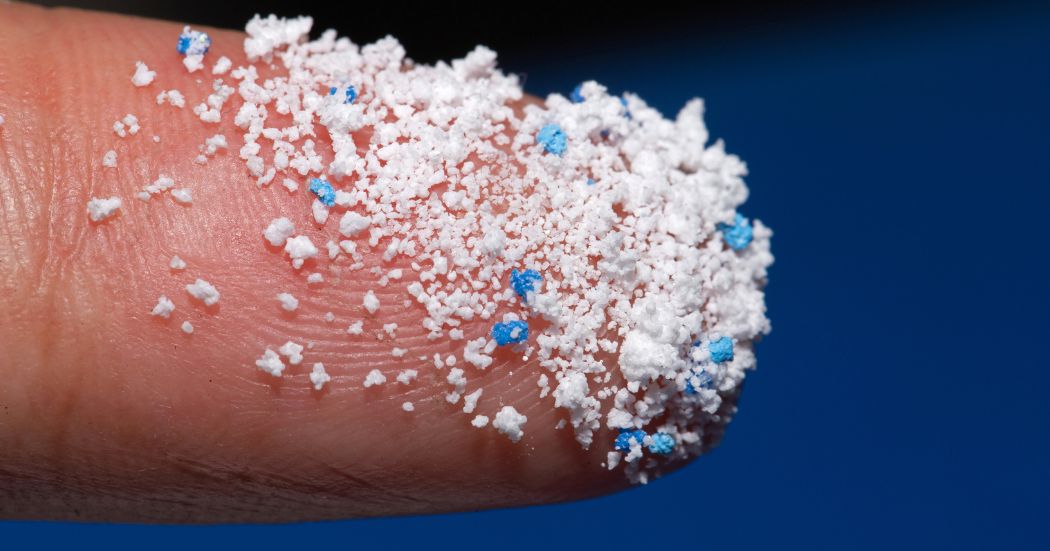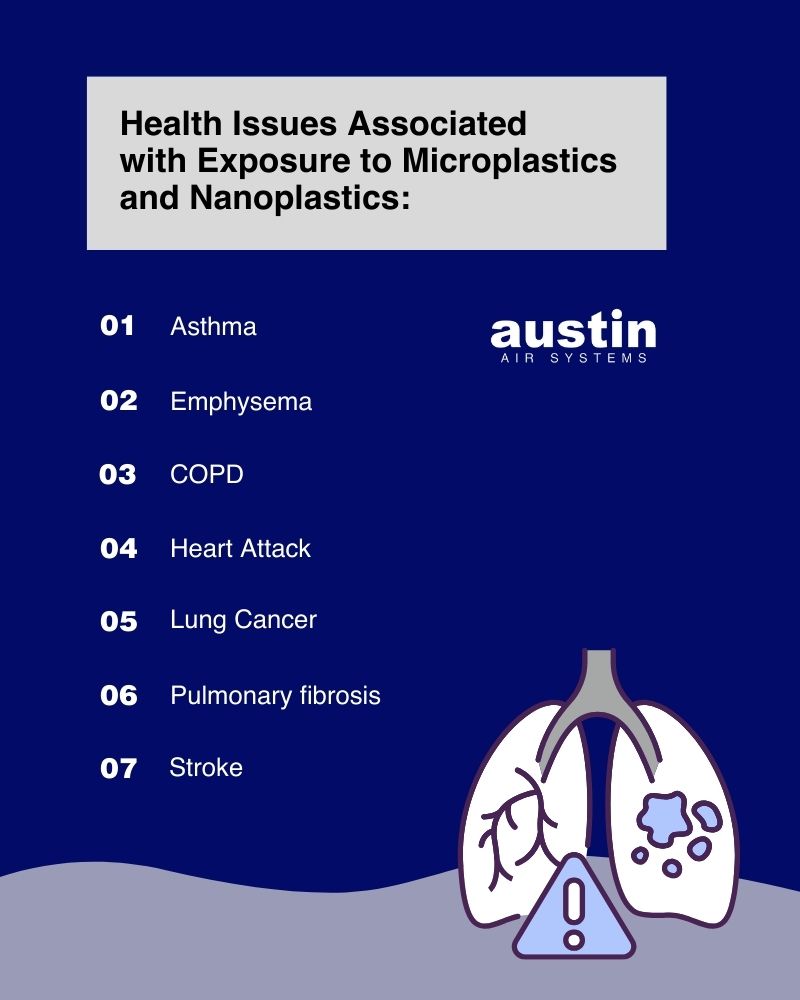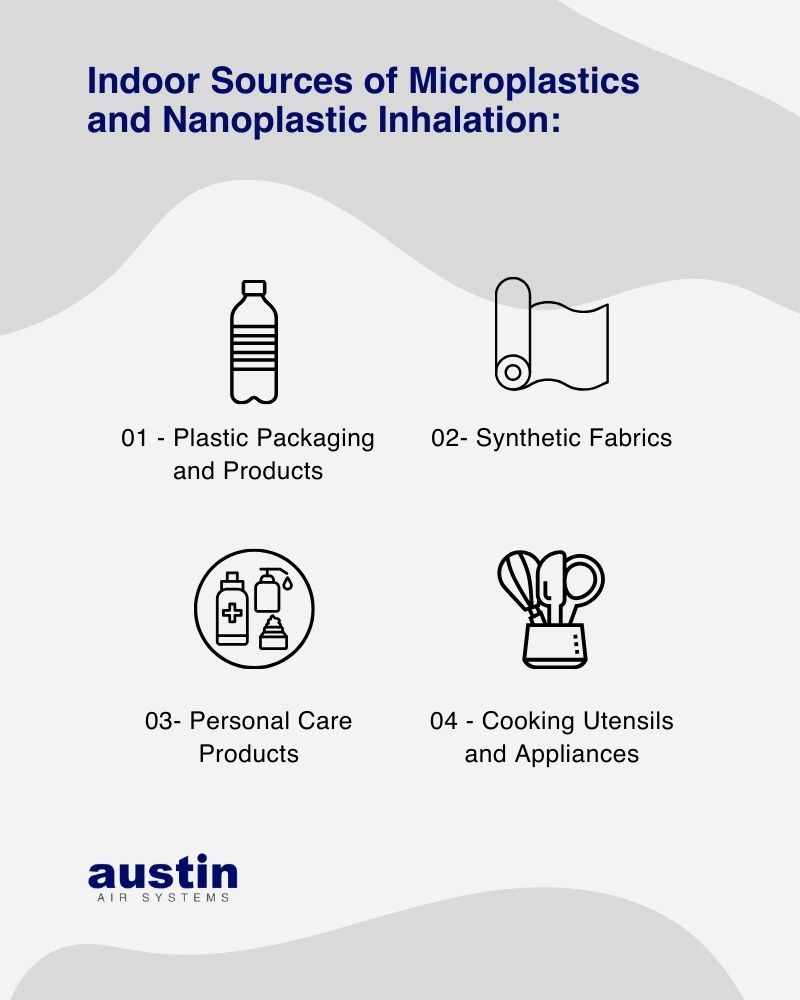Starting in the twentieth century, plastic revolutionized numerous industries and aspects of daily life due to its versatility, durability, and affordability. Many experts refer to the current archeological period as the “Plastic Age” because of the widespread production, use, and disposal of plastic materials.
Unfortunately, the universal adoption of plastic materials in modern society has resulted in unprecedented pollution. The plastic crisis exists because plastic doesn’t really decompose. The prevalence of single-use plastic and improper disposal of all plastics have led to serious pollution of oceans, rivers, and landfills, as well as harm to wildlife and humans.1 Plastic has even made its mark in the fossil record, showing up in coastal sediments.2
Instead of decomposing, the plastic deposited into our environment breaks down into smaller and smaller pieces known as microplastics and nanoplastics. In addition to being in our water and food, these tiny fragments of plastic become airborne and create a health hazard that we are increasingly inhaling.3
Not a lot is known about microplastics and nanoplastics at the moment. The scientific community is only just beginning to understand the threat they pose for human health but the preliminary evidence indicates that caution is crucial.
What Are Microplastics?
Microplastics are tiny particles of plastic that are less than 0.2 inches (5 mm) in length – which is about the size of a pencil eraser – down to 1 micron (1 μm).4 Microplastics come from a variety of primary and secondary sources. The most common are secondary, which are formed from the erosion, or breakdown, of larger plastic items we use every day like bottles and bags. Synthetic fabrics, such as polyester and nylon, also shed microplastics from clothing and upholstery.
Primary microplastics are intentionally manufactured in their small size for use in products like cosmetics, cleaning agents, and industrial abrasives. Microplastic particles are a significant environmental concern because they can persist in the environment for a long time, accumulate in ecosystems, and harm wildlife and human health.
What Are Nanoplastics?
As some of you may have guessed based on the name – nanoplastics are smaller than microplastics. They measure between 1 micrometer (1 μm/0.001 millimeters) down to 0.001 μm in size. Just like microplastics, nanoplastics can originate from the breakdown of larger plastic items (including microplastics) or from direct manufacturing processes.
Nanoplastics are of particular concern due to their extremely small size, which allows them to potentially enter cells and tissues of organisms, including marine life and humans. Before we go any further, it is important to make a distinction between microplastics and nanoplastics. (The many scientists who study this topic will thank us for this.)56 It’s not just their size that matters (although that is important) – it is their behavior. There are extra concerns about the potential of nanoplastics to cause harm due to their ability to absorb toxins and transport them through the environment. (You read that correctly, nanoplastics are a greater risk for this than microplastics.)
Nanoplastics have a greater surface area-to-volume ratio that causes nanoplastics to react differently with other organisms, like bacteria. It’s challenging for scientists to research these phenomena due to the small size and instability of samples but it has been established that nanoplastics are more reactive than microplastics. Their smaller size allows them to bind with and be covered by other molecules, like pollutants, to form new toxins.7
Alarmingly, nanoplastics are small enough to enter tissue cells and have been known to damage mitochondria.8
The Impact of Microplastics and Nanoplastics on Human Health
Microplastics and nanoplastics receive a lot of attention over the havoc they wreak on marine environments – and rightfully so, it’s a MAJOR problem – but they may pose a more common threat from being inhaled. One major factor is repeated exposure. Airborne microplastics and nanoplastics can settle on the ground and other surfaces before becoming airborne again due to wind, air movement, or other activity.
Microplastics are now found in human placentas.9 They were also discovered in airways for the first time recently, and the findings bring about worries over long-term exposure and the negative influence on respiratory health.10
Microplastics and nanoplastics pose risks to human health from inhalation due to their ability to penetrate deep into the respiratory system, causing inflammation, oxidative stress, and tissue damage, raising concerns about long-term health effects.
In addition to lodging in human lung tissue, microplastics and nanoplastics can carry bacteria and viruses on their surface, which are then introduced into the respiratory, circulatory, and cardiovascular systems.11 Toxic chemicals and pathogens also adhere to them.12
One study showed that microplastics and nanoplastics contribute to the development of asthma, chronic obstructive pulmonary disease (COPD), lung cancer, emphysema, and pulmonary fibrosis.13
A team from Italy has established that over 50% of the plaque removed from clogged arteries in a group of patients contained microplastics. The fatty plaques were taken out of narrowed arteries in a procedure that reduces the risk of stroke. The patients were tracked for three years following the procedure and the people with detectable microplastics in their plaque were 4.5 times more likely to have experienced a heart attack, stroke, or death than the patients who didn’t have visible microplastics in their plaque.14
These are preliminary results with a small sample of patients and it’s not yet possible to state that microplastics cause heart issues. But there is no doubt that there is a correlation between microplastics and nanoplastics with cardiovascular disease.

Sources of Airborne Microplastics and Nanoplastics
Perhaps the best-known example of a microplastic is microbeads. They gained popularity in personal care products like exfoliating scrubs and toothpaste decades ago but were banned in 2015 because they were found to linger in waterways and ecosystems.15
The sad truth is that the ban on microbeads wasn’t enough because plastic is breaking down into smaller pieces everywhere, every day. Microplastics and nanoplastics have been found in both outdoor and indoor air, but concentrations are higher indoors—as with other forms of air pollution like volatile organic compounds (VOCs).
The leading sources of microplastics and nanoplastics are:
Plastic Packaging and Products: Degradation of plastic packaging materials, household items, synthetic carpet fibers, and furnishings can release nanoplastic particles into indoor air and dust, especially under conditions of mechanical stress or exposure to heat. Nanoplastic particles can form from the fragmentation of microplastics present in household environments as well.
Synthetic Fabrics: Microplastics and nanoplastics shed from synthetic textiles such as polyester, nylon, and acrylic clothing during washing, wearing, and drying.
Personal Care Products: A staggering 87% of the cosmetics sampled contained microplastics, according to the ground-breaking 2022 report, “Plastic: The Hidden Beauty Ingredient,” conducted by environmental advocates at Plastic Soup Foundation.16
Cooking Utensils and Appliances: Plastic utensils, containers, and appliances used in cooking and food preparation can contribute to nanoplastic contamination, particularly when exposed to high temperatures or mechanical abrasion. These microplastics and nanoplastics are eaten and inhaled.
How to Protect Yourself and Your Family
There’s no easy way to say this, but these days, it is almost impossible to avoid plastics. Preventing the inhalation of microplastics and nanoplastics can be challenging, but there are some steps individuals can take to minimize exposure:
Reduce Plastic Use: Minimize the use of plastic products in your daily life. Opt for reusable items made from alternative materials such as glass, stainless steel, or silicone.
Choose Natural Fibers: When purchasing clothing, bedding, and other textiles, choose natural fibers like cotton, wool, or bamboo over synthetic materials, which can shed microplastics when washed.
Properly Dispose Of Plastic Waste: Ensure that plastic waste is disposed of properly by recycling it according to local guidelines. Avoid littering, as plastics can eventually break down into microplastics that may become airborne.
Use an Austin Air Purifier: Improve ventilation in indoor spaces to reduce the concentration of airborne particles, including microplastics. Opening windows and using exhaust fans can help.
While it may be impossible to completely eliminate exposure to microplastics and nanoplastics, taking these steps can help reduce the risk to some extent.
Austin Air Cleaners – The Best Air Filtration to Remove Microplastics and Nanoplastics
Austin Air offers superior air purification by using more media combined than any other air cleaners on the market – a combination of HEPA and activated carbon. The HEPA technology in every Austin Air cleaner captures 99.97% of particles larger than 0.3 microns and 99% of particles larger than 0.1 microns. The activated carbon is an added source of purification which filters out contaminants like gases, chemicals, and volatile organic compounds (VOCs).
Austin Air cleaners have an additional advantage over competing products, particularly in regard to protecting you from microplastics and nanoplastics, because our air purifiers are made from stainless steel instead of plastic. The air cleaner market is flooded with products made of plastic which will off-gas harmful fumes and also erode down into microplastics and nanoplastics.
We can’t get over the irony of “air cleaners” which diminish air quality instead of improving it but they are out there for sale.
The growing presence of microplastics and nanoplastics in our environment poses potential health risks, as inhalation may lead to respiratory issues and other adverse effects. While complete avoidance may be challenging, taking proactive steps such as reducing plastic usage and air filtration can help mitigate exposure. Continued research and public awareness are crucial in understanding and addressing the implications of microplastic and nanoplastic pollution on human health.
This is an ever-developing situation as the science expands but the preliminary evidence makes it clear that added protection can only serve to help you and your family stay healthy.
REFERENCES
1 Reducing Single-Use Plastic Pollution (n.d.). U.S. Department of The Interior. https://www.doi.gov/reducing-single-use-plastic-pollution.
2 Brandon JA, Jones W, Ohman M. (2019 Sept 4). Multidecadal increase in plastic particles in coastal ocean sediments. Sci. Adv. 5(9). doi:10.1126/sciadv.aax0587.
3 Ziani K, Ioniță-Mîndrican CB, Mititelu M, et al. (2023 January 25). Microplastics: A Real Global Threat for Environment and Food Safety: A State of the Art Review. Nutrients. 15(3):617. doi: 10.3390/nu15030617.
4 Bermúdez JR and Swarzenski PW. (2021) A microplastic size classification scheme aligned with universal plankton survey methods. MethodsX,. 8:101516. doi: 10.1016/j.mex.2021.101516.
5 ter Halle A and Ghiglione JF. (2021 October 22). Nanoplastics: A Complex, Polluting Terra Incognita. Envi Sci & Techn. 55(21):14466–14469. doi: 10.1021/acs.est.1c04142.
6 Gigault J, El Hadri H, Nguyen, B. et al. (2021 April 29) Nanoplastics are neither microplastics nor engineered nanoparticles. Nat. Nanotechnol. 16:501–507 (2021). doi: 10.1038/s41565-021-00886-4.
7 Sharma VK, Ma X, Lichtfouse E,et al. (2022 November 9). Nanoplastics are potentially more dangerous than microplastics. Environ Chem Lett. 21:1933–1936. doi: 10.1007/s10311-022-01539-1.
8 Cao G, Cai Z. (2023 March 7). Getting Health Hazards of Inhaled Nano/Microplastics into Focus: Expectations and Challenges. Environ Sci Technol. 57(9):3461-3463. doi: 10.1021/acs.est.3c00029.
9 Cassella, C. (2024, March 6). Microplastics Found in Every Human Placenta Tested, Study Finds. ScienceAlert. https://www.sciencealert.com/microplastics-found-in-every-human-placenta-tested-study-finds.
10 Islam MS, Rahman M, Larpruenrudee P, et al. (2023 June 1). How microplastics are transported and deposited in realistic upper airways?. Physics of Fluids. 35(6):063319. doi: 10.1063/5.0150703.
11 Turner, B. (2024 March 13). Humans inhale a staggering amount of microplastic every week. Here’s where it ends up. Live Science. https://www.livescience.com/health/humans-inhale-a-credit-cards-worth-of-microplastics-every-week-heres-where-it-ends-up.
12 Gao Z, Chou P-I, Liu J,et al. (2022 December 27). Oxidative Roles of Polystyrene-Based Nanoplastics in Inducing Manganese Oxide Formation under Light Illumination. ACS Nano.16 (12), 20238-20250. doi: 10.1021/acsnano.2c05803.
13 Lu K, Zhan D, Fang Y, et al. (2022 September 28). Microplastics, potential threat to patients with lung diseases. Front Toxicol. 4:958414. doi: 10.3389/ftox.2022.958414.
14 Marfella R, Prattichizzo F, Sardu C, et al. (2024 March 6). Microplastics and nanoplastics in atheromas and cardiovascular events. NEJM. 390(10):900-910. doi: 10.1056/NEJMoa2309822.
15 What are microplastics? (n.d.). US NOAA National Ocean Service. https://oceanservice.noaa.gov/facts/microplastics.html.
16 Bosch, F. (2022 November 23). 9 in 10 Cosmetics Contain Microplastics. Plastic Soup Foundation. https://www.plasticsoupfoundation.org/en/2022/04/almost-9-in-10-products-from-major-cosmetics-brands-contain-microplastics/.


